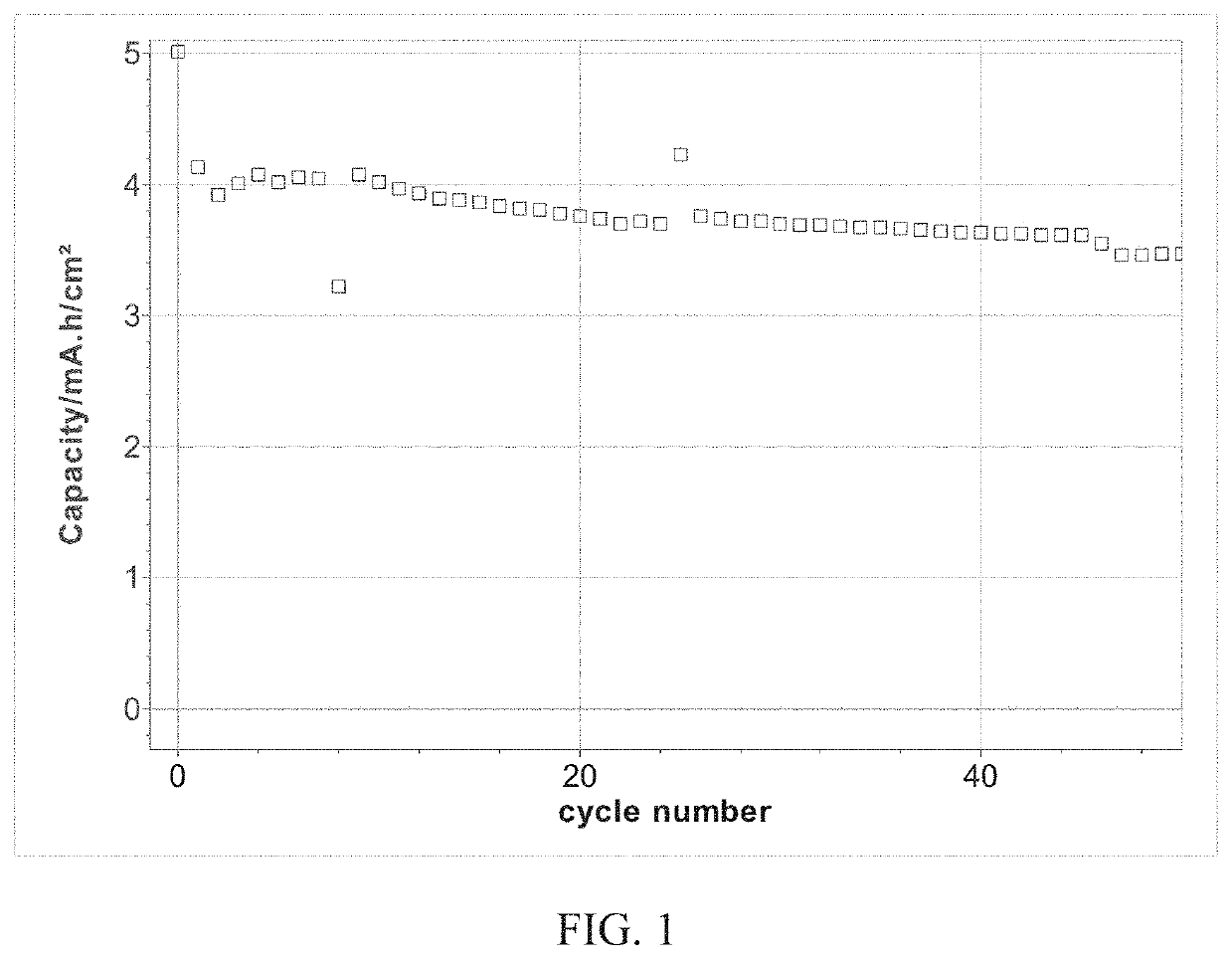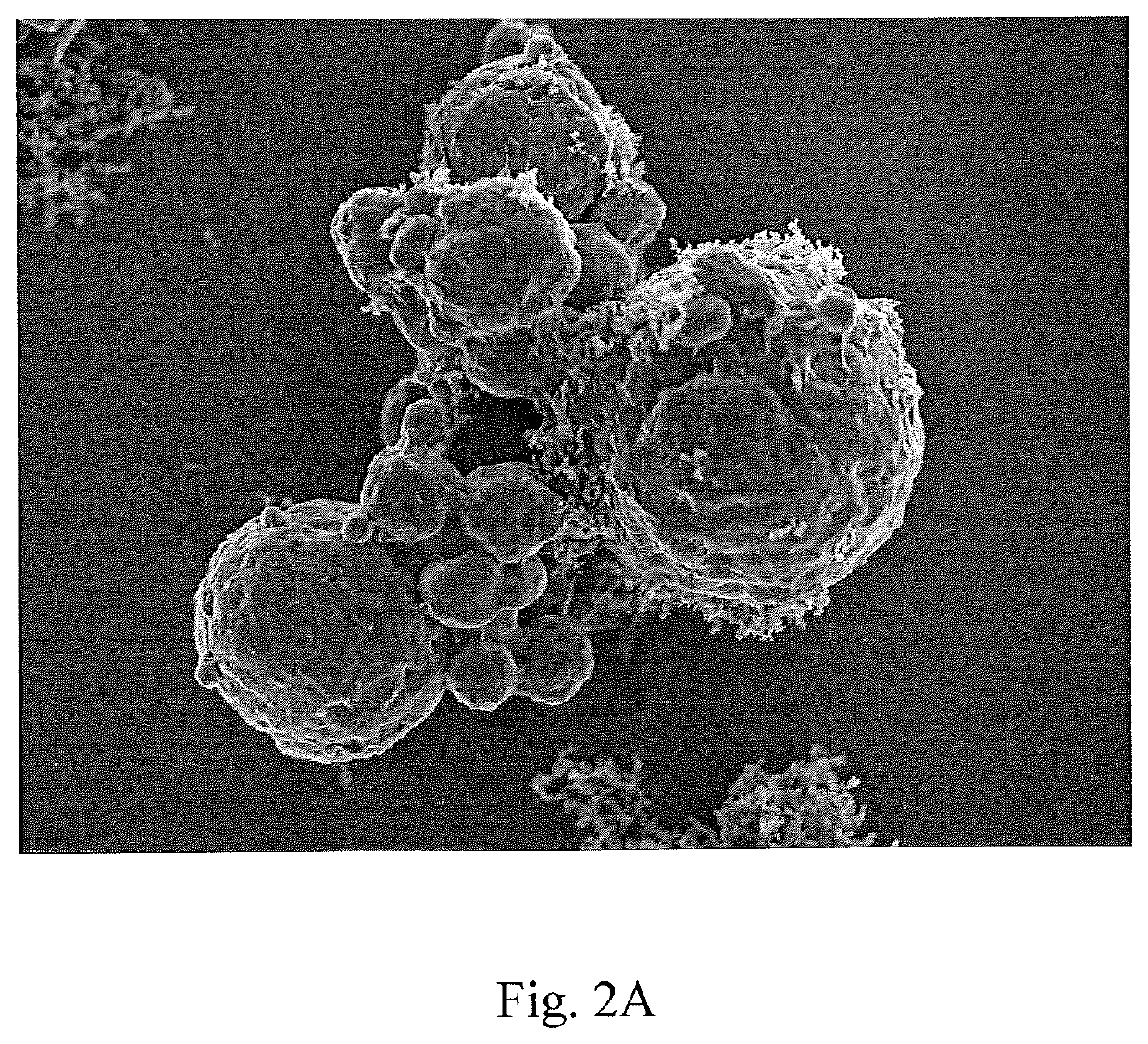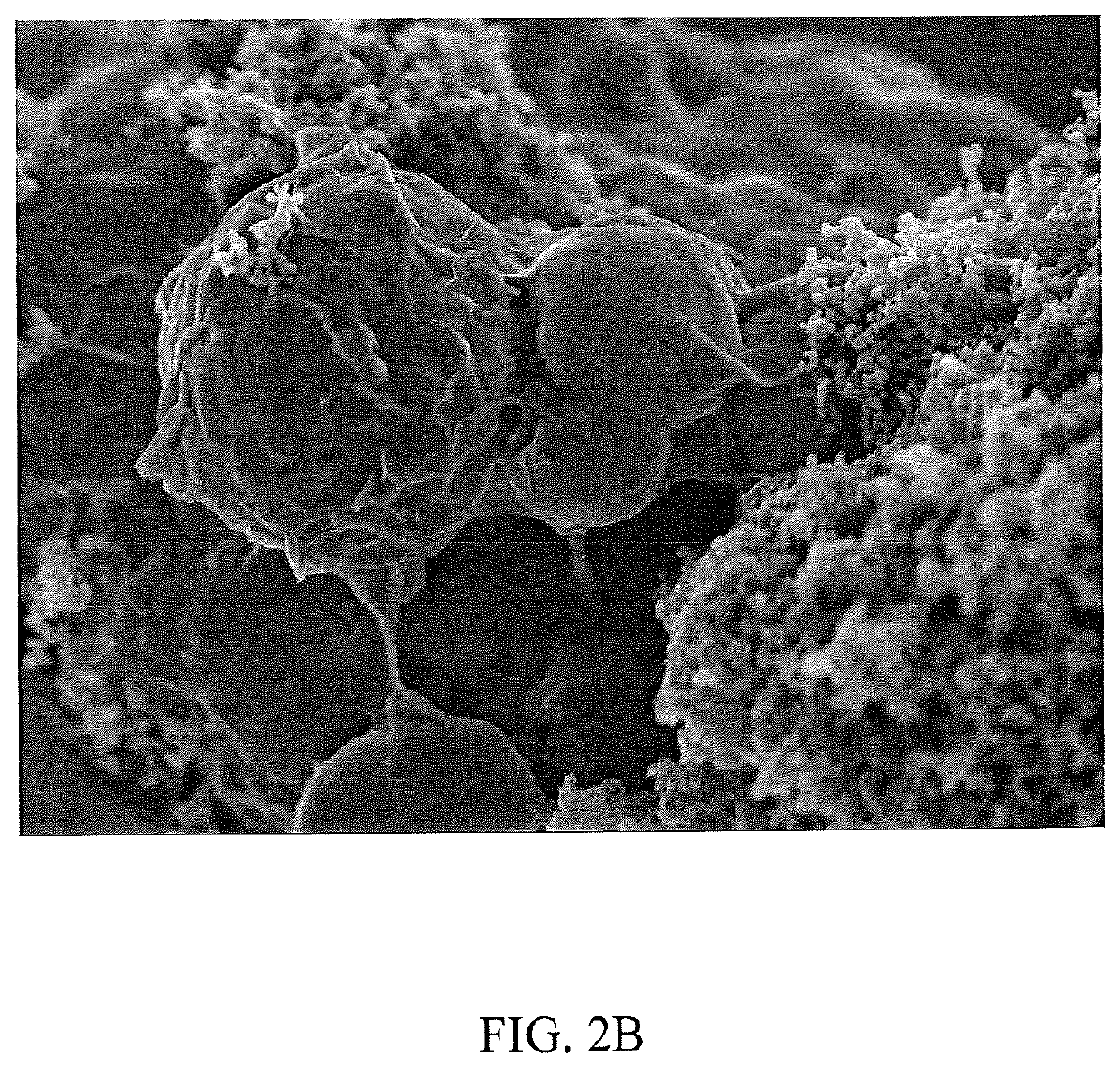Sulfur particles coated with inorganic-organic hybrid membranes as cathode active material and batteries containing the particles
a technology of inorganic-organic hybrid membranes and active materials, which is applied in the direction of positive electrodes, cell components, basic electric elements, etc., can solve the problems of unacceptably high mass loss of active materials during cycling, diffusion and subsequent loss, and electrical insulation of sulfur particles
- Summary
- Abstract
- Description
- Claims
- Application Information
AI Technical Summary
Benefits of technology
Problems solved by technology
Method used
Image
Examples
example 1
[0083]200 g of potassium polysulfides were dissolved in 3.5 L of water. 4 g of Ketjenblack® 600JD and 1 g bPEI, MW 750,000 were added to the solution. After strong mechanical mixing of the mixture, 150 ml concentrated HCl was added slowly and allowed to react for approximately 2 hours. The precipitated sulfur particles were separated and reslurried in water to prepare a hybrid membrane. Using layer-by-layer technique, 5 layers were applied to the precipitated scaffold sulfur particle obtained. Cloisite® Na and bPEI layers were added sequentially beginning with a layer of bPEI from solutions of 1 g Cloisite® Na or 1 g BPEI dissolved in 1.5 L water. After each layer deposition, the material is rinsed in water and centrifuged for collection then layered again. A total of 5 layers were deposited in this manner. The resulting material consisted of spherical particles less than 1 um in diameter. The particles were well coated by the clay containing membrane and did not exhibit pinholes wh...
example 2
[0088]200 g of potassium polysulfides from Sigma Aldrich were dissolved in 1.5 liters of deionized water and mixed with 1 g branched PEI (75 k MW) and 2 g Ketjen Black 600JD from Azko Nobel yielding a black solution. A clear solution of 400 g ascorbic acid dissolved in 2 liters deionized water was slowly added to this mixture. The color of the reaction mixture changed during addition from dark black to slightly yellow, then bright yellow, followed by gradual darkening to a dark soft grey / blue. The reaction was allowed to proceed for 4 hours after which it was centrifuged (˜800 rpm) and rinsed once in 1 liter deionized water.
[0089]Layer by Layer Coating of the Particle
[0090]5 layers of branched PEI / Cloisite a clay were adhered to the particle to yield the finished core-shell composite sulfur particle. Branched PEI (75 k MW) was added first and last. Each layer addition was performed by suspending the particle mass in 1 liter of deionized water with stirring, adding LiNO3 to obtain a ...
PUM
| Property | Measurement | Unit |
|---|---|---|
| diameter | aaaaa | aaaaa |
| diameter | aaaaa | aaaaa |
| length | aaaaa | aaaaa |
Abstract
Description
Claims
Application Information
 Login to View More
Login to View More - R&D
- Intellectual Property
- Life Sciences
- Materials
- Tech Scout
- Unparalleled Data Quality
- Higher Quality Content
- 60% Fewer Hallucinations
Browse by: Latest US Patents, China's latest patents, Technical Efficacy Thesaurus, Application Domain, Technology Topic, Popular Technical Reports.
© 2025 PatSnap. All rights reserved.Legal|Privacy policy|Modern Slavery Act Transparency Statement|Sitemap|About US| Contact US: help@patsnap.com



